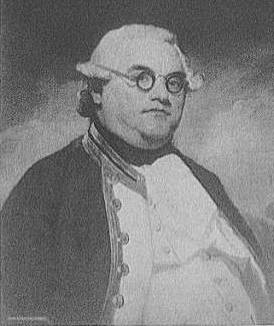By Morf Morford
Tacoma Daily Index
Among the many changes sweeping over us in 2020 is the reconsideration of names.
The names of parks, streets, monuments and schools is being looked at as never before.
But who of us even considered these familiar names before?
As a native of Pierce County, I had always thought that King County held that name because it was the most populous and prominent of Washington state counties – hence the “king” of the counties.
The county’s logo, after all, was based on an imperial crown for many decades.
Who, in the greater Puget Sound area had even heard of William Rufus King (a native of Alabama), who had won election in 1852 (the year King County was chartered) as Vice President on the Democratic ticket with President Franklin Pierce?
Our county, Pierce County, perhaps attempting to surpass King County, chose as its namesake President Franklin Pierce (more on the repercussions of that choice later).
In 1986, the King County Council approved a motion to rename the county to honor civil rights leader Martin Luther King Jr., preserving its name “King County” while changing its namesake – and logo.
Not every county, park or school can change its name so easily.
Pierce County, cannot make such a simple transition, by finding another prominent person with the name “Pierce” for example.
But who said a county had to be named after a person anyway?
What if we kept the name “Pierce” but used it as a verb instead of a historic person’s name?
We could use an icon, perhaps the point of a spear as our icon, pointing to our “destiny” – also part of our pre-existing image and name.
We, the citizens and businesses of Pierce County, are not afraid of change or challenges – or even the “king” just north of us.
Like King County, we could keep our name, but change the history and set of associations.
Wilson High School could do something similar. Wilson High School is embedded in the history of Tacoma and many of our citizens.
But Woodrow isn’t.
Wilson High School, like King County could change its identity without changing its name.
I suggest “renaming” Wilson High School after August Wilson, the playwright.
Based toward the end of his life in Seattle, Wilson’s best known plays are Fences (1985) (which won a Pulitzer Prize and a Tony Award), The Piano Lesson (1990) (a Pulitzer Prize and the New York Drama Critics’ Circle Award), Ma Rainey’s Black Bottom, and Joe Turner’s Come and Gone.
With Tacoma’s recent reputation for an emphasis on the arts, this seems like a logical, and relatively painless step.
The long-standing, and certainly most visible entity in need of a name change is, of course Mt. Rainier.
The name of the mountain that dominates our state has been controversial for many decades.
Peter Rainier (1741-1808) was a British Royal Naval officer who served during the Seven Years’ War and the American Revolutionary War among others.
Peter Rainier never saw the mountain that bears his name or set foot in the Pacific Northwest. His friend, Captain Vancouver, thought it fit (possibly because Peter Rainier was himself a bit portly and physically resembled the shape of the mountain).
Changing the name of our mountain from literally one of our nation’s sworn enemies, back to its original native name, is for many reasons, the right thing to do.
Most of us presume that, given the geographic, chronological and cultural distance we hold from slavery, the Confederacy and the American Civil war, that we are immune from the controversies over Confederate and slave-holding monuments.
And we’d be wrong.
Crosscut did a bit of research on Washington state Confederate place-names (https://crosscut.com/2020/07/confederate-legacy-washington-state?) and found far more than most of us would have expected. Some tucked away and some hidden in plain sight.
Who of us knew about the Jefferson Davis Highway project (https://en.wikipedia.org/wiki/Jefferson_Davis_Highway), a planned transcontinental highway in the United States in the 1910s and 1920s that began in Arlington, Virginia, and extended south and west to San Diego, California; named for Jefferson Davis, President of the Confederate States, United States senator, and Secretary of War?
And yes, part of Highway 99 in Washington state carried his name in honor of, er, something.
The idea, supported by The United Daughters of The Confederacy, was to continue the Jefferson Davis Highway north out of San Diego and finally to the Canada–US border.
I don’t know how intentional it was, but the Jefferson Davis Highway would have been an ironic, perhaps even cynical, tribute to those slaves who escaped to Canada via the Underground Railroad.
How changing many of our place names from those who sought to destroy our national unity, held slaves and promoted slavery or even were advocates of white supremacy could be controversial will be a puzzle for future historian to deal with. How they acquired those names in the first place is surely the burning question.
Most cultures raise monuments and name their landmarks for those who honored, respected and lived up to their nation’s principles.
It’s difficult to even begin to imagine the values and principles of those whose names we have become so familiar with.
We in the Pacific Northwest have a plethora of historic native place names. Each one unique and rich in significance.
Many, like Puyallup, Yakima, Tacoma and even Seattle, have become so familiar that we barely notice them.
We have a destiny, and a legacy like no other part of our country. We should reclaim it wherever we can.





